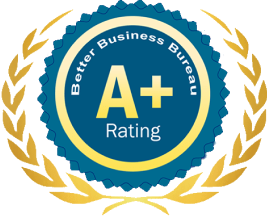Table of Contents
The Occupational Safety and Health Administration (OSHA) requires employers to report specific injuries and illnesses that occur on the job. This rule is designed to help keep workplaces safer by ensuring serious injuries are tracked and appropriately addressed.
Amputations and the loss of an eye, for example, are considered severe injuries that need to be addressed immediately. If an employee is hospitalized due to a work-related injury, that must also be reported. Additionally, respiratory conditions, skin diseases, and other ailments that develop due to exposure in the workplace must be reported. Furthermore, all work-related fatalities must also be reported.
If you’re unsure whether your injury needs to be reported, don’t hesitate to ask your employer for clarification or consult experienced workers’ compensation lawyers. Knowing what qualifies for reporting can help you know when your injury or illness must be documented and ensure that your rights are protected.
A Breakdown Of Incidents And Injuries Reported To OSHA
OSHA’s updated recordkeeping rule has expanded the list of severe injuries employers must report. These changes took effect on January 1, 2015, and are applicable to workplaces under Federal OSHA rules. If an employee sustains fractures, deep cuts, electrocution injuries, or burn injuries during their scope of work, their employer must report it to OSHA.
These types of injuries are serious and can lead to hospitalization, long-term harm, or even death. When serious injuries are reported, OSHA can look into what happened and take appropriate measures to make workplaces safer. This process helps prevent similar accidents in the future.
Here’s a breakdown of incidents and injuries that must be reported immediately to OSHA:
All Work-Related Fatalities
A work-related fatality is any death resulting from an injury or illness directly caused by the conditions or activities in the workplace. If a fatality happens within 30 days of a work-related incident, your employer must report it to OSHA within 8 hours of learning about it. If your employer doesn’t report it, you have the right to file a complaint.
Here are some common workplace accidents and incidents that can lead to fatalities:
- Falls — Falls are the primary cause of death in the construction industry. According to data from the Bureau of Labor Statistics reported on OSHA’s Fall Prevention Campaign, there were 1008 construction-related deaths in 2020. About 34.82% (351) of these were fatal falls. Fall injuries are also common in manufacturing and healthcare facilities.
- Machine-Related Incidents — Workers who operate heavy equipment face significant risks of getting severely injured or dying in heavy machinery accidents. According to the National Safety Council (NSC), injuries from these incidents are the third leading cause of work-related deaths. These accidents often result from malfunctions, lack of proper maintenance, or failure to follow established safety protocols.
- Exposure to Harmful Substances — Some workers develop fatal illnesses due to prolonged exposure to hazardous chemicals, gases, or other dangerous substances. For instance, California workers exposed to asbestos risk developing mesothelioma, an aggressive cancer with a poor prognosis, due to prolonged exposure. Under OSHA regulations, employers must report work-related illnesses like mesothelioma if they are diagnosed and determined to be job-related.
- Workplace Homicides and Suicides — Fatalities resulting from workplace violence, including conflicts between co-worker or others in the work environment, must be reported to OSHA. Unsafe working conditions, harassment, or work-related stress factors can cause mental health issues that can drive affected employees to take their own lives.
- Motor Vehicle Accidents — Fatal motor vehicle accidents injuring employees during work-related activities, such as truck crashes or delivery vehicle collisions. OSHA requires reporting of these incidents if they occur in the work environment or during job-related tasks, excluding commuting to and from work.
All Work-Related Amputations
In 2018, about 58% of work-related amputations were linked to machinery, with 3,580 cases reported. These numbers show how dangerous heavy equipment can be if proper safety measures aren’t followed. Accidents involving machinery are one of the most serious risks in many workplaces, especially in industries like manufacturing, construction, and farming.
Injuries that can potentially lead to amputation include:
- Crush Injuries — These happen when machinery, forklifts, or heavy objects pin or trap a part of the body, causing severe damage. In some cases, the pressure is so intense that it results in the loss of the affected limb.
- Severe Lacerations — According to the OSHA data, 18,559 amputations were documented in the United States between 2015 and 2021. An amputation is necessary when a body part needs to be removed due to severe lacerations from tools, saws, or sharp machinery.
- Burn Injuries — Explosions and fires at work can lead to devastating burn injuries that might lead to amputations. Faulty gas lines, improperly stored combustible materials, or open flames are some of the most common causes. According to the National Center for Biotechnology Information report, 42% of all work-related injuries were burns. When the burns are too deep and widespread, amputation may be necessary to save the rest of the injured limb.
Work-Related Eye Loss
OSHA defines loss of an eye as the complete removal of the eye. This includes two procedures:
- Enucleation — The surgical removal of the entire eyeball while leaving the eye muscles and other contents intact.
- Evisceration — Involves removing the inner contents of the eye but keeping the outer shell.
While loss of vision without actual removal of the eye is not reportable, cases involving vision loss that lead to hospitalization within 24 hours of the accident must be reported.
Here are some types of injuries that might result in the loss of an eye:
- Penetration Injuries to the Eye — Sharp objects like nails, metal shards, or tools can pierce your eye, causing severe damage to the eye’s structure. There are 441 eye removal cases related to metal and nail wounds.
- Chemical Burns Affecting the Eye — If exposed to hazardous chemicals without proper eye protection, you risk sustaining injuries ranging from transient redness and irritation to blindness, eye loss, and other serious eye injuries.
- Thermal-Related Eye Injuries — High heat from flames, steam, or hot surfaces can burn your eye, causing irreversible damage.
According to OSHA, no cases were documented between 2015 and 2021. However, we must remain aware of the potential causes that might lead to the loss of an eye.
All Work-Related Inpatient Hospitalizations
Work-related injuries that require inpatient hospitalization are serious and must be reported to OSHA. Employers are required to report inpatient hospitalization to OSHA within 24 hours of becoming aware of the incident. Hospitalization, regardless of how long you stay, is reportable if it involves more than medical observation or diagnostic tests.
Here are some common work-related injuries that often lead to hospitalization:
- Severe Fractures — These can happen from falls, being struck by heavy objects, or equipment malfunctions. Fractures may require surgery or extended monitoring to ensure proper healing and prevent complications.
- Head Injuries — Slip-and-fall accidents or being struck by falling objects in the workplace can result in traumatic brain injuries or skull fractures. These injuries require close observation, imaging tests, or even neurosurgery to manage swelling or bleeding.
- Spinal Cord Injuries — Work-related accidents, like falling off a roof or an elevator shaft, lifting injuries, and car collisions, can all cause spinal cord damage. Injured employees might need hospitalization for stabilization, pain management, or surgery to avoid paralysis or other serious repercussions.
Other Occupational Diseases
Many work-related illnesses are due to long-term exposure to harmful environments or sudden incidents on the job. Whether working around hazardous chemicals in extreme temperatures or in physically demanding conditions, you must know the risks that could affect your health and safety.
Understanding occupational diseases can help employees take the necessary precautions. If you know how exposures or injuries at work can cause major health problems, you can speak out against unsafe conditions and ensure you get the proper care and protection.
Here are some types of occupational illnesses:
- Respiratory Diseases — Work environments with harmful dust, fumes, or chemicals can lead to lung diseases like asthma or chronic obstructive pulmonary disease (COPD). These illnesses are often linked to inhaling hazardous substances, such as coal dust, silica, welding fumes, or gases.
- Musculoskeletal Disorders — These injuries happen when workers strain their muscles, joints, or connective tissues during physically demanding tasks. Over time, repetitive motions, heavy lifting, or awkward postures often cause them.
- Heat-Related Illnesses — Heatstroke, sunstroke, and heat exhaustion can happen if you work in hot environments or outdoors. Construction crews or farmhands are more at risk because they’re exposed to extreme heat for long hours. Heatstroke is serious and often means staying in the hospital for a few days to check for complications.
More serious work-related injuries or illnesses can sometimes lead to tragic outcomes, including fatalities. For example, exposure to hazardous substances like mercury can have life-threatening effects if not addressed immediately.
The Difference Between Recordable And Reportable Injuries
OSHA requires employers to record and report work-related injuries and illnesses. Here’s the difference between recordable and reportable injuries:
Recordable Injuries
OSHA defines a recordable injury or illness as any work-related fatality or any injury or illness that leads to loss of consciousness, time away from work, restricted duties, or a transfer to another job. Additionally, any injury or illness that requires more than basic first aid or any diagnosed case of cancer, chronic irreversible diseases, fractures, cracked bones or teeth, and punctured eardrums must be recorded. There are also specific criteria for recording cases involving needlesticks, sharps injuries, medical removals, hearing loss, and tuberculosis. These regulations ensure that all significant workplace injuries and illnesses are documented for employee safety and health monitoring.
Reportable Injuries
Reportable injuries are the more serious ones. Any work-related fatality or serious injury must be reported to OSHA. Some examples of reportable cases include:
- Fatalities
- Amputations
- Loss of an eye
- Inpatient hospitalizations
All reportable injuries are recordable. However, not all recordable injuries are reportable. Recordable injuries require medical treatment beyond first aid and must be documented for safety records and maintained by the employer for five years. On the other hand, reportable injuries are more severe and must be immediately reported to OSHA within a specific timeframe.
Considering these definitions, an illness or injury may be recordable and reportable. For example, if an employee contracts tuberculosis (TB) due to workplace exposure, it must be recorded. If the illness leads to hospitalization or death, it must be reported.
If you’re unsure whether an injury qualifies as recordable or reportable, consider speaking with a workplace injury lawyer to understand your case better.
How To Report A Work-Related Injury To OSHA
If you experience a serious injury at work, your employer must report it to OSHA. It’s crucial to report your injury to your employer as soon as possible. Failing to report your injury within 30 days may result in the loss of your entitlement to workers’ compensation benefits. Ensure that any serious injuries, such as hospitalizations, amputations, or loss of an eye, are reported to OSHA by your employer.
If they fail to report your injury, you may do so yourself. Here are the steps you can follow:
- Telephone Reporting — You can call the OSHA hotline at 1-800-321-6742 (OSHA). This hotline is available 24/7.
- Local OSHA Office — You can also visit the nearest office to report the injury.
Providing detailed information about the incident, including the business name, names of affected employees, location, and time of the incident, a brief description of the incident, and a contact person with a phone number, will help ensure your report is complete. You may consult experienced work injury lawyers to learn more about your rights.
Employee Rights And Protections When Reporting Injuries
The OSH Act of 1970 is a federal law that protects your right to work in a safe workplace. Your employer is expected to keep your work environment free of known dangers that might jeopardize your health and safety. You can report any work-related injuries or accidents without fear of negative consequences.
Here’s what you have the right to do:
- Report any work-related injuries or illnesses and access your medical records.
- Review the workplace injury and illness log.
- Request a copy of the records for work-related injuries and illnesses.
Contact our knowledgeable employment lawyers if you’re unsure about your rights or need assistance.
The Importance Of Reporting Injuries
Reporting injuries is not just about adhering to regulations; it plays a vital role in fostering a safer workplace for everyone. Properly reporting workplace injuries helps identify risks, improve safety measures, and prevent future accidents. It’s a proactive approach to creating a healthier and more secure work environment.
Here’s how reporting injuries benefits you and your workplace:
- Prevention and Risk Reduction — Promptly reporting injuries allows employers to quickly identify and address workplace hazards. It leads to the implementation of improved safety measures, such as enhanced equipment, updated safety protocols, and better personal protective gear, reducing the risk of future accidents.
- Awareness and Education — Injury reporting helps raise awareness about potential risks. The more you know about safety issues and how to report them, the better you can protect yourself and your co-workers.
- Accountability and Transparency — Reporting injuries fosters a culture of accountability and transparency. It encourages everyone to take responsibility for maintaining a secure workplace. It also builds trust by showing employers are committed to addressing safety concerns and making meaningful improvements.
When you report injuries correctly, you protect yourself and make the workplace safer for everyone. Promptly reporting accidents ensures that hazards are identified and handled before they cause more harm.
What To Do After Getting Injured At Work
Taking the proper steps immediately after a workplace accident is crucial to protecting your health and rights. Here’s a sample guide on what to do if you’re injured at work:
- Report the injury to your supervisor as soon as possible. This way, you can avoid delays in getting the medical care or benefits you may be entitled to.
- Call 911 if it’s an emergency. You may also go to the emergency room and tell the medical staff that your injury is work-related.
- If your injury isn’t an emergency, get first aid and visit a doctor if necessary. Don’t wait too long to get medical attention.
- You must complete a workers’ compensation claim form and give it to your employer. You can download the form from the Division of Workers’ Compensation website if they fail to provide it.
- Contact Arash Law. Our workplace accident attorneys can guide you through the process. They can help submit forms, gather evidence, and negotiate with the insurance company on your behalf.
Injuries Covered By Workers’ Compensation
Workers’ compensation covers job-related injuries or illnesses, even those that might not appear on OSHA’s Log of Work-Related Injuries and Illnesses. This program protects workers by covering various work-related conditions, whether they result from a sudden accident, develop over time, or arise due to workplace conditions.
Here are some types of injuries covered by workers’ compensation:
- Physical Injuries — These are injuries caused by sudden incidents, such as falls, burns, or machinery accidents while performing work tasks.
- Repetitive Stress Injuries — Repetitive strain injuries at work may lead to many conditions, such as carpal tunnel syndrome or back strains and sprains.
- Occupational Illnesses — Illnesses caused by exposure to harmful substances or conditions, such as lung disease from inhaling toxic fumes, qualify for workers’ compensation.
- Catastrophic Injuries — Severe injuries, such as amputations or brain injuries, that permanently affect your ability to work are also covered.
Aside from these injuries, other circumstances may qualify. Here are some examples of work-related injuries that might be eligible for coverage:
- Injuries sustained in a company-owned vehicle during work tasks.
- Mental health conditions like anxiety or depression are linked to your job.
- Pre-existing conditions that worsen while performing job duties.
- Wounds sustained in accidents during a lunch break in the company cafeteria.
- Injuries at company events, including those caused by alcohol consumption.
Workers’ compensation protects you if you’re injured or become ill due to your job. If you’re unsure whether your injury is covered, consult your employer or workers’ compensation attorneys. They can help you understand your rights and guide you through the workers’ comp claims process.
Statistics On Workplace-Related Injuries
Data from the Bureau of Labor Statistics (BLS) revealed that in 2022, 318,100 of the 419,300 recordable injuries and illnesses in the private sector were injuries. The public sector reported 146,600 workplace injuries and illnesses in California. This figure equates to 8.8 cases per 100 full-time workers, higher than the national rate of 4.9. Of these, 78% involved local government employees.
In 2023, the BLS reported a significant drop in nonfatal workplace injuries and illnesses in private industries. Employers recorded 2.6 million cases, marking an 8.4% decrease compared to 2022. This improvement was primarily due to a sharp 56.6% decline in illnesses, which totaled 200,100 cases, the lowest since 2019.
Workplace safety statistics show progress, but accidents and illnesses still happen. Continuous effort is needed to ensure every worker has a safe and healthy workplace.
Frequently Asked Questions
Who Should Report A Fatality Or Inpatient Hospitalization Of A Temporary Worker?
If you are a temporary worker, the employer who supervises you on a day-to-day basis is responsible for reporting any work-related fatality, inpatient hospitalization, amputation, or loss of an eye to OSHA. This rule applies to recording injuries and illnesses.
When Do I Need An Employment Lawyer?
You might need an employment lawyer if you have sustained a workplace injury and your employer fails to report it to OSHA. Here are situations where an employment lawyer can help:
- Employer Retaliation — If you face negative actions for reporting your injury.
- Workers’ Compensation Claims — For assistance with filing or appealing claims.
- Disability Accommodations — If your employer doesn’t provide necessary accommodations.
- Safety Violations — To address ongoing safety issues.
- Medical Expenses and Lost Wages — To pursue compensation if your employer’s negligence caused the injury.
- Third-Party Liability — If a third party is responsible for your injury.
- Legal Support — For guidance on your rights and next steps.
In these situations, an employment lawyer can advocate for your rights and help you seek compensation.
When Do I Need A Workers’ Comp Lawyer?
Consider hiring a workers’ compensation lawyer if your claim is denied, if you’re not receiving fair benefits, if you face employer retaliation for filing a claim, if your injury results in permanent disability, or if your case is complex. A lawyer can explain your rights and work to pursue the compensation you deserve under California law.
In such cases, working with skilled workplace injury lawyers can be helpful. They can help you handle these issues and see that you receive fair treatment.
Contact Arash Law’s Workers’ Compensation Lawyers For A Free Consultation
If you suffer an injury on the job, our personal injury lawyers with experience in workplace accidents can help you file an OSHA complaint and pursue workers’ compensation benefits. Work-related injuries can result in medical bills, lost wages, and ongoing pain, but you don’t have to face them alone. Our team at Arash Law is here to help.
We understand the stress you’re dealing with. Having managed workers’ compensation claims for our clients across California, we understand the importance of seeking the compensation you are legally entitled to. Our workers’ compensation attorneys have decades of experience handling workplace accidents. From construction injuries and machine malfunctions to the work-related road crashes managed by our car accident lawyers, we’ve represented clients in a wide range of cases. Regardless of the situation, we’re here to support you and help review your case.
Don’t wait. Call our injury lawyers at (888) 488-1391 for a free initial consultation. We offer our services across California, including in Los Angeles, Sherman Oaks, Riverside, San Diego, San Francisco, Fresno, Sacramento, San Jose, and beyond.








































